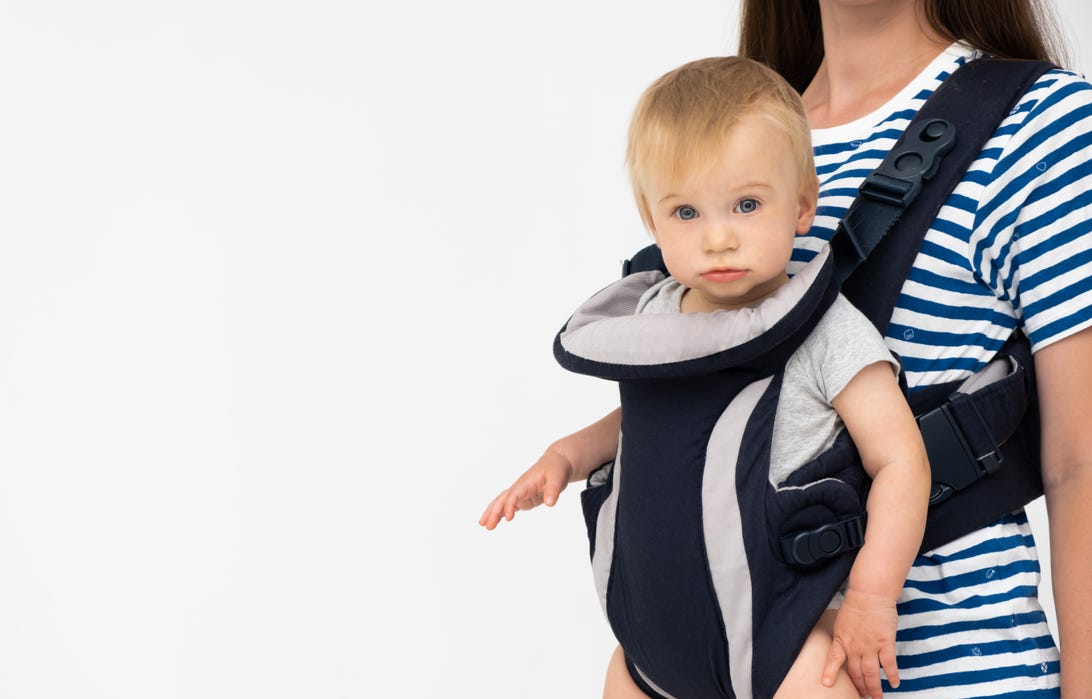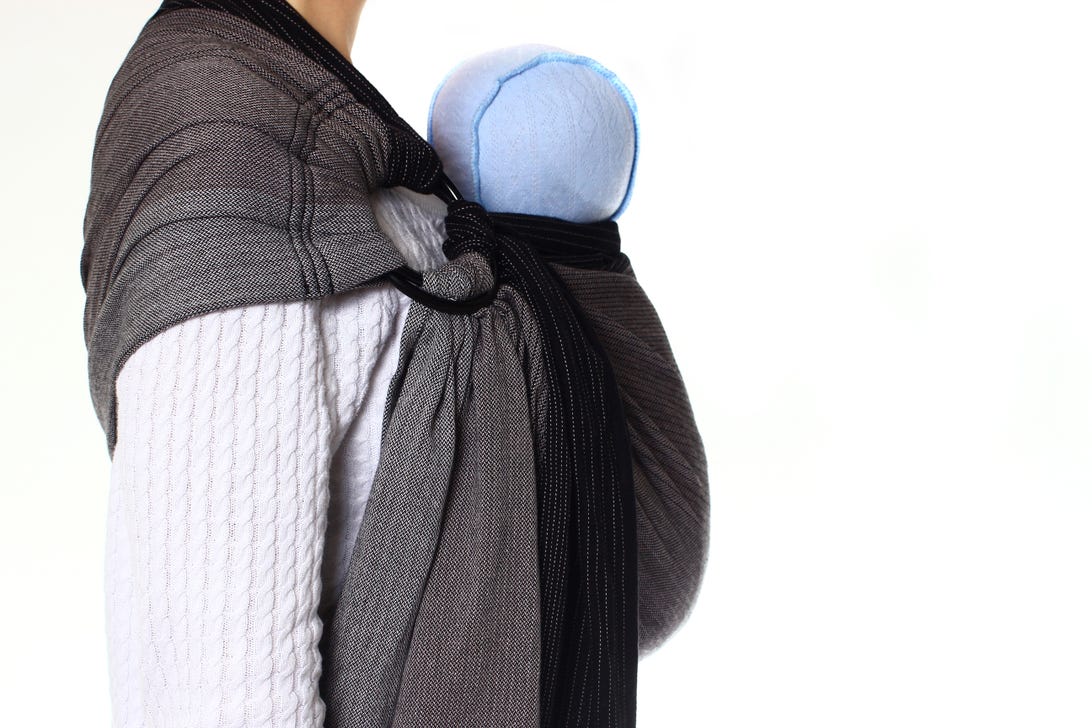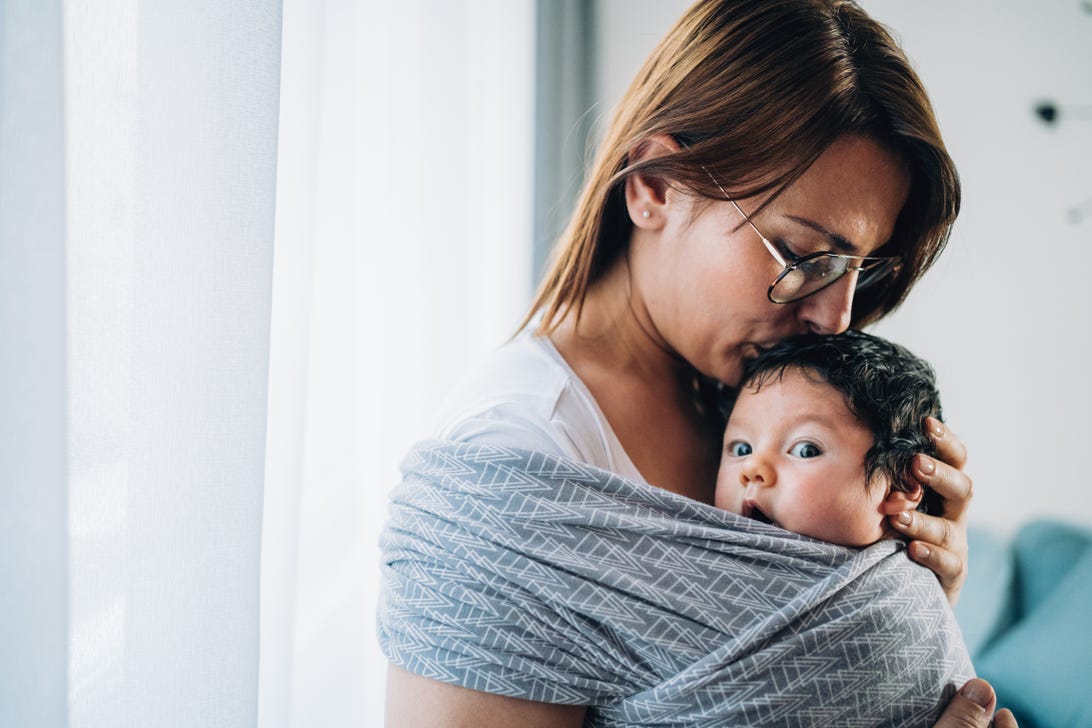
As many parents can attest, deciding how to carry your baby involves various considerations. First, you must choose if babywearing is right for you and your little one. Proponents of babywearing highlight that the process can release oxytocin and help with healthy emotional bonding. It also has been shown to significantly reduce baby crying in the right conditions.
Taking care of a baby is more rewarding than any other job, but it's a full-time commitment that requires a lot of tending and attention. Using babywearing techniques can give you some autonomy while also allowing you to care for the wee one. There are three main approaches or styles to babywearing: carrier, ring sling or wrap. There is no definitive best, but one may be better for you than the others.
What is babywearing?
Babywearing is the act of using a carrier, sling or wrap to wear your baby on your upper body. You can safely strap your baby to yourself, and they will stay securely hugged to you.
Carriers are a bit like a backpack designed to hold your baby on the front of your body. These are sometimes considered the most user-friendly for parents new to babywearing.
Ring slings are generally made from similar materials as wraps but are shorter and designed to be slung across the body, from shoulder to opposing hip. These can be easier to learn than wraps while still offering similar benefits.
Wraps are durable swathes of fabric that you wrap around your body to create what is essentially a pouch for your baby. These can be a little more difficult for new parents to master.
Is wearing your baby the best choice?
While babywearing may not be the best choice for everyone, it has many benefits. The National Institute for Health has summed up these benefits as falling into six distinct themes: decreased stress and anxiety; calmness and sleep; attachment; parental empowerment; ease of work; self-care. Below are some of the main perks of babywearing.
Keeps your hands free
While wearing your baby, you'll have more freedom to do other tasks than if you were carrying them. Freeing up your hands can help when you need to get things done without requiring you to set the little one aside.
Releases oxytocin
Known as the love hormone, the release of oxytocin has been shown to have positive effects on mood and bonding. This hormone has been shown to help with stress and anxiety reduction.
Reduces crying
Research has shown that wearing a baby for enough time, at the correct ages, can significantly help reduce the amount they cry.
Convenient for storage
Carriers, wraps, and slings can easily be folded up and stored. Carriers take up a bit more space than slings and wraps, but many of these are soft-structured and can still fit into relatively small areas.
Soft-structured carriers

Soft-structured carriers have a similar look to a backpack that has been specially designed to fit on your chest and hold a baby. The robust structure securely fits around the child, making it difficult for them to squirm free. The relative size and bulk of these is one of the key differences versus wraps and slings.
Pros of soft-structured carriers:
- Easy to use and adjust
- Easy to fit onto different body sizes and types
- Often designed for healthy weight distribution
- Most accessible babywearing style to learn
Cons of soft-structured carriers:
- Potential back strain
- Bulkier than other methods of babywearing
- Traps more heat than alternatives
Ring slings

Ring slings use a system of rings and fabric to create a secure pouch-like structure that can be worn on different parts of the body, though across the chest is the most common. One of the key reasons people select these is for the relative ease of use.
Pros of ring slings:
- Doesn't require much adjustment in between uses
- Easier to learn than a wrap
- Can alternate between front, hip and back for wearing
Cons of ring slings
- Limited weight distribution can create discomfort or strain
- Less secure than a carrier if there's going to be vigorous movement
- Less adjustable to different body types than a carrier
How do you wrap a baby in a ring sling?
- With new ring slings, you must first thread the rings.
- Wrap the sling around until it forms a circle, with the free end threading through the double rings like a belt. It's best to fit it over your shoulder to see how much fabric to leave free. This step is essential to do correctly so that the sling can provide enough support. It can help to watch a video tutorial of this process.
- Next, it's time to adjust your fit. Select a shoulder to wear the sling over and fit the other end of the loop over your opposite hip.
- Finally, it's time to fit your baby into the sling. Keep your baby fully supported with your hands and arms until the sling is fully and snugly supporting the baby.
Baby wraps

Baby wrap slings are long, wide swathes of strongly stitched fabric. Unlike the other two babywearing styles, they don't include rings, buckles or other attached adjustment devices.
Pros of baby wraps:
- Some are one-size-fits-all
- Can be good for the weight distribution of the baby, reducing strain
- Easy to adjust and tie without having to wear it during the process
Cons of baby wraps:
- It has the steepest learning curve of the three babywearing techniques
- One-size-fits-all wraps may offer less support
- The stronger, more supportive wraps are not one-size-fits-all
How do you wrap a baby in a carrier sling?
These can have several different tying and wrapping techniques. The versatility of these is one reason why wearing wraps has been so popular. For new learners, it can be helpful to watch a video tutorial or have these techniques demonstrated in person. Remember, you want to make sure your baby is fully secure before wearing them hands-free.
- First, put the center of the wrap in front of your middle.
- Pull both ends around you so that they cross over the small of your back and come up over your shoulders.
- Pull the two ends over your shoulders so that they come down over your chest and then cross each other underneath the band of wrap going across your middle.
- Tie your wrap ends behind you to secure the entire wrap.
- Prepare the wrap to hold your baby.
- Place your baby carefully in the wrap and secure the wrap around them.
Are baby carriers, slings or wraps better?
Which approach works best for you and your baby can depend on several factors. For instance, some parents find that wraps are more comfortable and supportive for newborns when they're at their squishiest.
Try a baby carrier if…
- You want good weight distribution to avoid localized muscle strain
- Easy adjustment and a relatively easy learning curve are important
- You plan to wear the baby while doing more vigorous movement
Try a sling if…
- You don't want a carrier but want something more straightforward than a wrap
- You want to be able to carry your baby on either shoulder or hip
- You don't mind carrying all your baby's weight on one spot at a time
Try a wrap if…
- You're working with a newborn who needs more body-contouring support
- You've mastered ring slings and want a steeper learning curve
- You want a variety of options and wearing techniques available in one device
The information contained in this article is for educational and informational purposes only and is not intended as health or medical advice. Always consult a physician or other qualified health provider regarding any questions you may have about a medical condition or health objectives.









 Add Category
Add Category